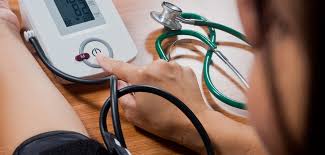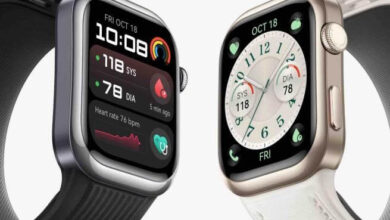Why Doctors Recommend a 24-Hour BP Monitor for Hypertension Diagnosis

Hypertension, commonly known as high blood pressure, is a silent condition that can lead to severe health complications if left undiagnosed or misdiagnosed. Standard blood pressure readings taken at a clinic often fail to provide a complete picture of a patient’s condition.
This is where a 24-hour BP Monitor becomes crucial in delivering precise and comprehensive blood pressure data. Therefore, to provide a clear picture, in this article, we’ll take a closer look at the 24-hour BP monitor and see how it works and what its potential benefits and limitations are for patients.
Understanding the 24-Hour BP Monitor
A 24-hour BP Monitor, also known as ambulatory blood pressure monitoring (ABPM), is a portable device that records a patient’s blood pressure at regular intervals throughout the day and night.
Unlike conventional blood pressure measurements taken in a clinical setting, ABPM captures fluctuations in blood pressure, providing a more accurate representation of a person’s health status.
How Does a 24-Hour BP Monitor Work?
The monitor consists of a cuff worn around the upper arm and a small device that records blood pressure readings at set intervals—typically every 15–30 minutes during the day and every 30–60 minutes at night. A doctor then analyses the collected data to assess variations in blood pressure levels.
Why Do Doctors Recommend a 24-Hour BP Monitor?
Doctors often rely on ambulatory blood pressure monitoring to gain deeper insights into a patient’s condition beyond what is possible with a single clinical reading. A 24-hour BP Monitor helps identify patterns, diagnose hidden hypertension, and optimise treatment plans.
Below are some of the key reasons why medical professionals recommend this method:
1. Identifying White Coat Hypertension
Many patients experience elevated blood pressure in a clinical setting due to anxiety, a phenomenon known as white-coat hypertension. This can lead to an incorrect diagnosis of hypertension and unnecessary medication. A 24-hour BP Monitor helps differentiate between true hypertension and anxiety-induced spikes.
2. Detecting Masked Hypertension
The opposite of white coat hypertension is masked hypertension, where a patient’s blood pressure appears normal in a clinic but is elevated in daily life. This condition often goes undetected through standard check-ups but can be accurately identified using ambulatory monitoring.
3. Evaluating Blood Pressure Variability
Blood pressure fluctuates daily based on physical activity, stress levels, and sleep patterns. A single measurement at a doctor’s office may not capture these variations. A 24-hour BP Monitor provides a more comprehensive assessment of blood pressure trends.
4. Assessing Nocturnal Hypertension
Hypertension that persists at night is a strong predictor of cardiovascular disease. Since routine blood pressure measurements are taken during the day, nocturnal hypertension often goes unnoticed. ABPM captures overnight readings, helping doctors identify potential risks.
5. Optimising Hypertension Treatment
A 24-hour BP Monitor helps assess the effectiveness of prescribed treatments for patients already on medication. It allows doctors to determine if the medication dosage or timing needs adjustment to maintain stable blood pressure levels.
Who Should Use a 24-Hour BP Monitor?
Doctors recommend ambulatory blood pressure monitoring for:
- Individuals with a suspected white coat or masked hypertension
- Patients with fluctuating blood pressure levels
- People with a family history of hypertension or cardiovascular disease
- Individuals already on antihypertensive medication to ensure treatment effectiveness
- Pregnant women at risk of gestational hypertension or preeclampsia
How to Prepare for a 24-Hour BP Monitoring Test
If your doctor prescribes a 24-hour BP Monitor, here’s what you need to know:
1. Wear Loose Clothing
Since the device has a cuff attached to your arm, wearing loose-fitting clothing will make it more comfortable.
2. Follow Your Normal Routine
To get the most accurate reading, go about your daily activities as usual. However, avoid intense exercise or excessive movement that could interfere with the device’s operation.
3. Keep a Symptom Diary
Recording symptoms like dizziness, headaches, or palpitations alongside your readings can provide valuable insights for your doctor.
4. Avoid Caffeine and Alcohol
Stimulants such as caffeine and alcohol can temporarily elevate blood pressure, so it’s best to avoid them during the monitoring period.
Benefits of a 24-Hour BP Monitor Over Standard Blood Pressure Tests
Traditional blood pressure tests taken at a clinic provide only a single snapshot of a person’s blood pressure at a given moment. However, blood pressure is dynamic and fluctuates throughout the day due to various factors such as stress, physical activity, and sleep patterns.
A 24-hour BP Monitor offers continuous readings over a full day and night, ensuring that variations are captured for a more accurate diagnosis. Below are some of the key advantages of this method:
1. Increased Accuracy
Unlike single readings at a clinic, ABPM provides a continuous, real-world assessment of blood pressure fluctuations.
2. Reduced Risk of Misdiagnosis
A 24-hour BP Monitor reduces the chances of false hypertension or undiagnosed high blood pressure by capturing an entire day’s worth of readings.
3. Improved Treatment Decisions
Doctors can make better-informed treatment plans based on data from ABPM rather than relying solely on sporadic clinic readings.
4. Better Cardiovascular Risk Assessment
Since high blood pressure is a major risk factor for heart disease and stroke, early detection and management can prevent serious complications.
Where to Get a 24-Hour BP Monitor in Australia
Several healthcare providers and diagnostic centres across Australia offer 24-hour BP Monitor services. Some private clinics also allow patients to rent or purchase the device for home monitoring. Always consult your doctor for the best option suited to your condition.
Limitations of a 24-Hour BP Monitor
While a 24-hour BP Monitor is a valuable diagnostic tool, it does have some limitations:
- Some patients find wearing the device uncomfortable, particularly during sleep.
- The cuff inflates regularly, which can be inconvenient for certain activities.
- The device may occasionally give inaccurate readings due to arm movement.
Despite these minor inconveniences, the benefits of ambulatory blood pressure monitoring far outweigh the drawbacks, making it an essential tool for diagnosing and managing hypertension.
Conclusion
A 24-hour BP Monitor is a game-changer in hypertension diagnosis and management. It provides more accurate readings than traditional clinic-based measurements, helps doctors detect hidden hypertension, and ensures better treatment decisions.
If you suspect you have high blood pressure or want a more comprehensive assessment of your cardiovascular health, consult your doctor about using a 24-hour BP Monitor. Early detection and management can significantly reduce the risk of heart disease, stroke, and other hypertension-related complications.





